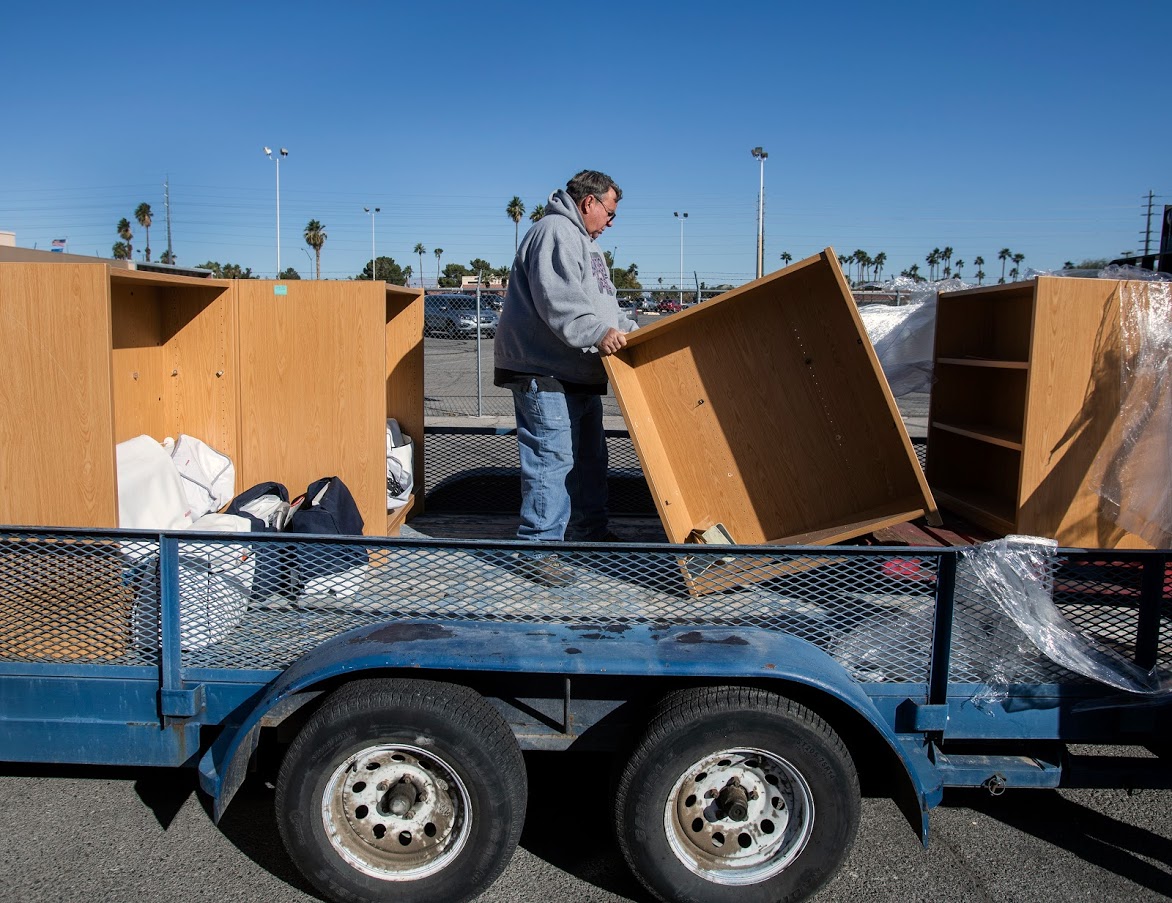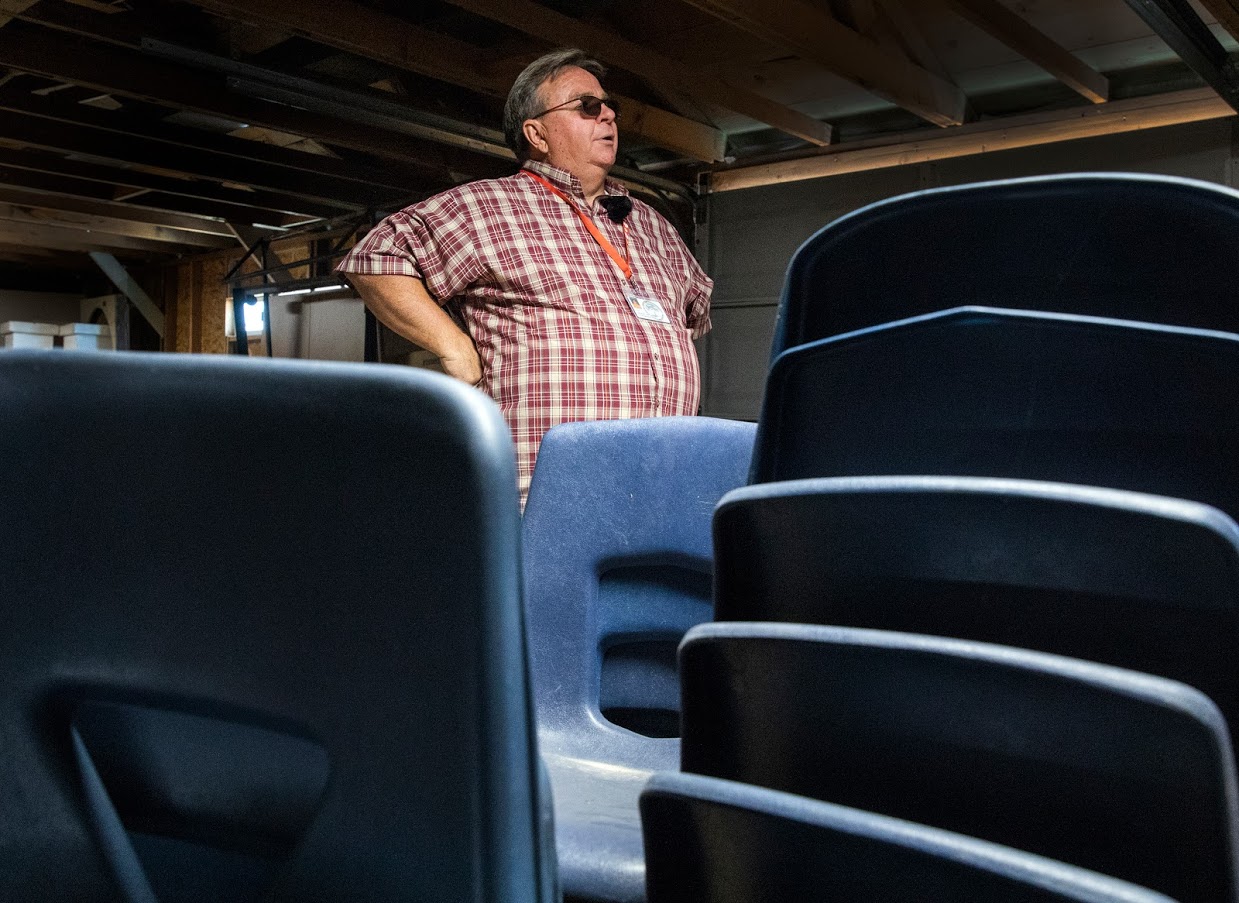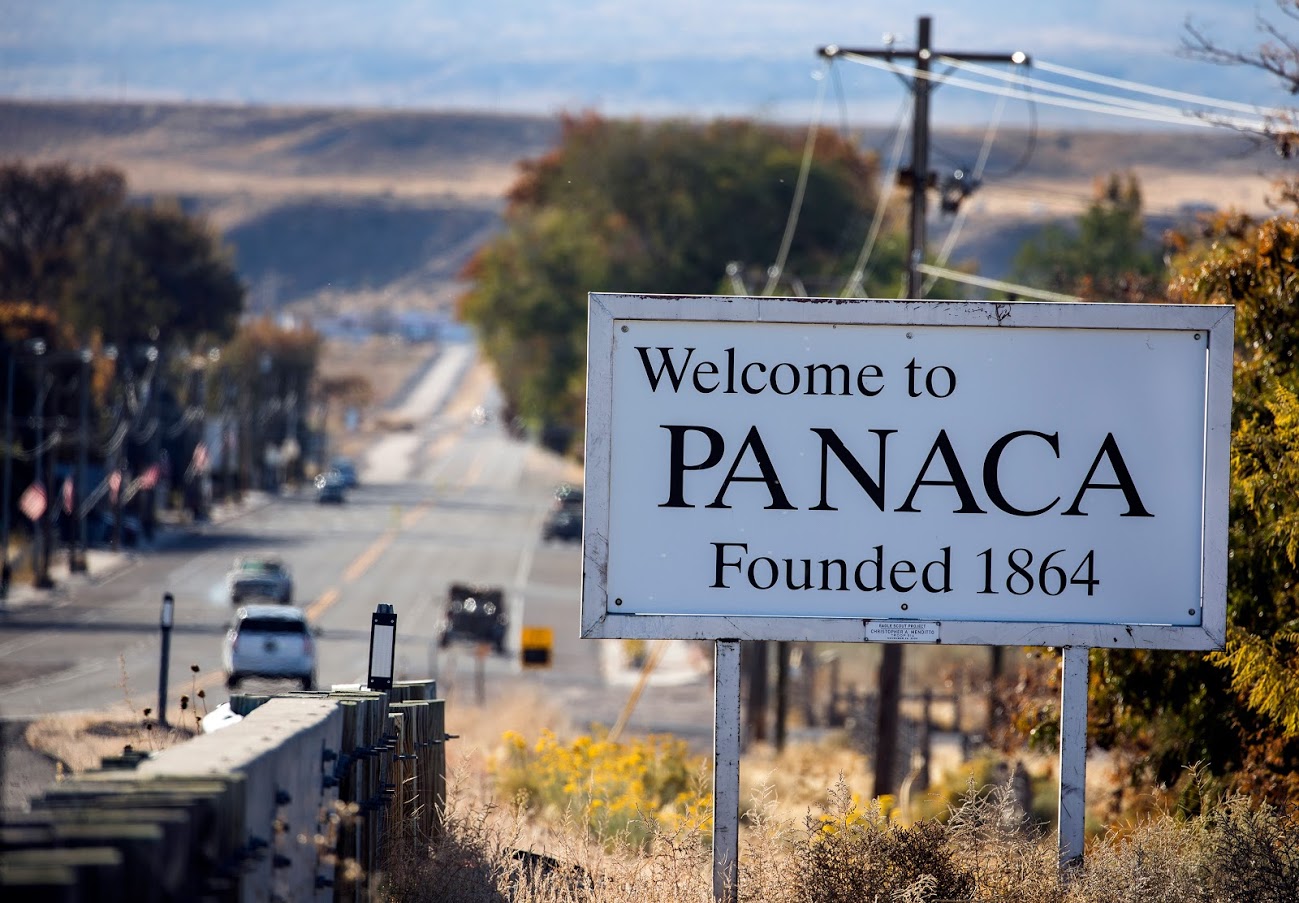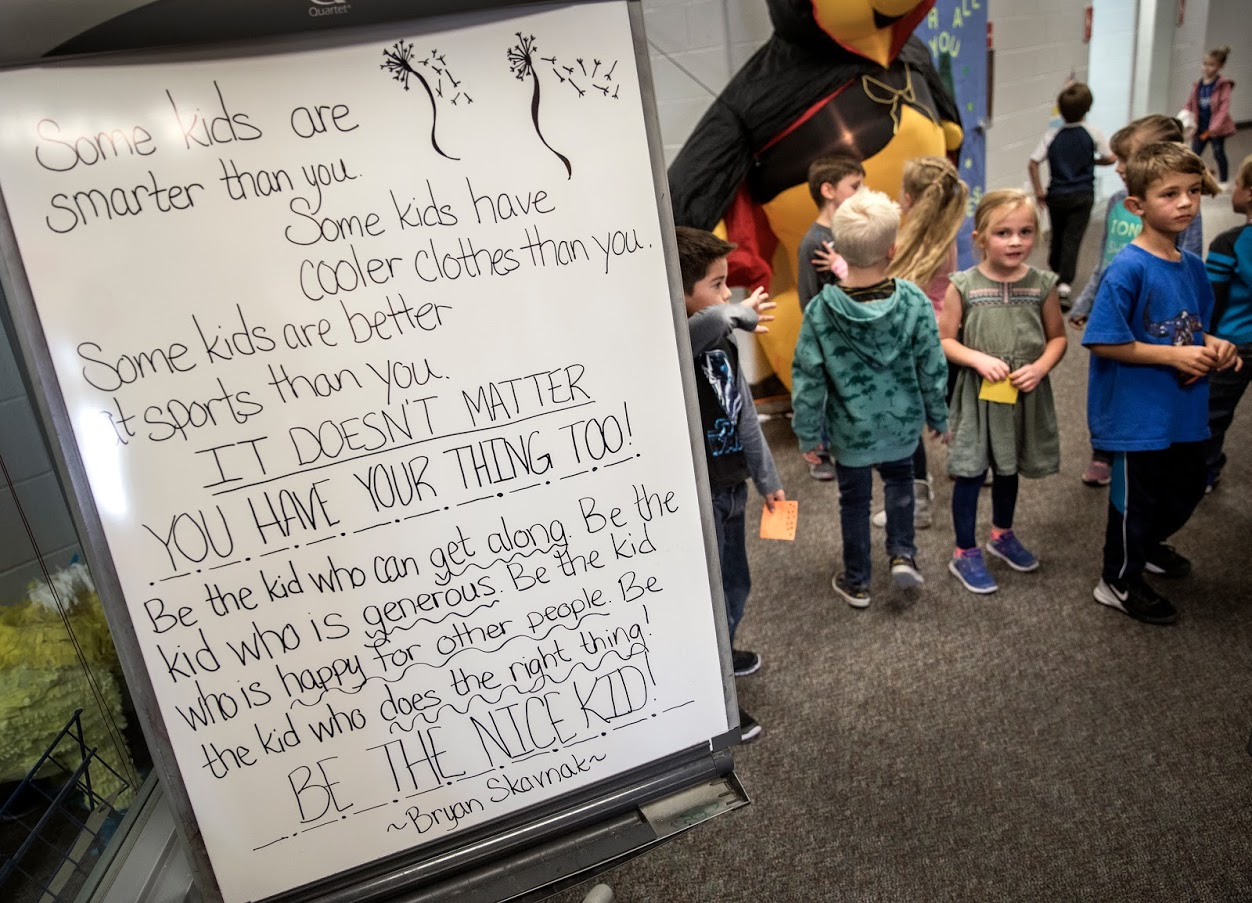The flatbed trailer almost couldn’t accommodate a fourth kitchen rack.
But the two men wrangling the bulky metal structure refused to give up. They tugged and they shoved until it fit snugly, joining filing cabinets, sewing machines, bookcases and other Clark County School District hand-me-downs bound for Lincoln County.
James Gliddon watched with amusement. It was his last day as a standard specialist and warehouse supervisor for the nation’s fifth-largest school district, which means he oversees the furniture and goods picked up from Clark County schools. Over the years, he had observed this scene dozens of times and now, with retirement mere hours away, he couldn’t help but smile once again.
“Sometimes his wish list is too much, and he doesn’t have room for it all,” he said.
Gliddon was referring to Pete Peterson, principal of Panaca Elementary School, who makes the roughly 175-mile pilgrimage to this Las Vegas warehouse several times a year. Dressed in jeans and a gray hoodie, Peterson gazed approvingly at the trailer. He and the school’s custodian, James Settles, had mastered the Tetris-like operation. Every desired item found a spot.

All told, the inventory filling the trailer and bed of the pickup truck would have cost $4,717.50 under normal circumstances. But there would be no cash or checks exchanged on this day. It was all free to a good home — in this case, the neighboring Lincoln County School District.
“It saves them money and it clears out my warehouse,” Gliddon said.
In a state as geographically diverse as Nevada, a perception exists that it’s an urban-versus-rural or north-versus-south education landscape, where every school district fends for itself. Yes, tug-of-wars exist, especially when dollars are at stake. The ongoing development of the state’s new education funding formula certainly will expose some of those cracks. But there’s also under-the-radar partnerships between school districts and benevolent community members that extend the proverbial helping hand.
Peterson considers his regular trips to Las Vegas a lifeline for his school district, which serves a student population smaller than most Clark County high schools.
“I can’t even imagine,” the veteran Lincoln County educator said. “I don’t know how this district survived before that started happening.”
So with a handshake, a thank-you and a goodbye to Gliddon — a man who became a friend over the years — Peterson hopped back in the district-owned white Dodge Ram 3500 and started heading north.
***
Weeks earlier, Peterson sat in his office, surrounded by the bounty collected through his trips south. The bookcases, the credenza, the filing cabinets, his desk? All from the Clark County School District. Even the plush couch next to the door hailed from the urban district years ago.
There’s more. A roller cart in the library once lived at Eldorado High School in Las Vegas. Metal chairs stacked in a storage room also originated in Clark County. So did a weight-measuring set, some wall maps, dictionaries, a table and desks in a sixth-grade classroom. Virtually any classroom in this 168-student school tells the same story.
“I probably have a dozen desks in my school that we purchased,” Peterson said, “and everything else is from Clark County.”
It all started with eight or nine pianos. After the Lincoln County School District received some donated pianos from Clark County, a thought occurred to Peterson: What more would they be willing to give? He met some resistance at first. Peterson said Clark County leaders told him they don’t give away their used goods, but several weeks later, he received a phone call from the district’s head of purchasing. She had a cubby available for Lincoln County if he wanted it. Peterson agreed, and when he drove down, she asked him what more his school district could use.
That was roughly 15 years and many trailer loads ago. Peterson credits Clark County with essentially furnishing Panaca Elementary School since it opened in 2011, saving the smaller district at least $500,000 over time.

If there’s any catch, it’s that Lincoln County is always a bit behind the times. Whiteboards and ceiling-mounted projectors, once considered modern classroom upgrades, took years to make their way there. Still, district leaders say the Clark-to-Lincoln County pipeline plugs a hole state funding isn’t filling.
Here’s where people may scratch their heads: Lincoln County receives the second-highest per-pupil funding from the state. This year that amount is $12,131, which is nearly double the statewide average. The Clark County School District receives $6,067 per pupil.
Nevada’s existing funding formula takes into account factors such as student enrollment, transportation expenses, local wealth, operational costs, salaries and benefits, and number of teachers. Rural districts tend to receive more because of the higher costs associated with educating students in vast landscapes. Eighty miles separate Pioche and Alamo, the towns anchoring the northern and southern parts of Lincoln County.
And despite a small student population — 993 students last year — the district must employ enough teachers to satisfy state academic standards. Although that means some smaller class sizes, especially in upper grades, it’s also a bigger dent in the district’s budget. On top of that, Lincoln County doesn’t have much of a local tax base. Caliente, the only incorporated community in the county, boasts several motels, restaurants, stores and a small casino. Panaca, on the other hand, has just a service station and small grocery store.
The slim tax base, in some ways, means a quieter way of life. In Panaca, many children ride their bikes to school and park them outside — no locks necessary. Teachers know their students’ older and younger siblings, and many families worship together on Sundays.
But there’s a financial tradeoff. The Lincoln County School District largely makes do with its state funding allotment given meager local tax revenue.
About 19 percent of all Lincoln County School District’s funding this year comes from local sources, while state sources make up 61 percent, said Michaela Tonking, the advocacy and data director for Educate Nevada Now, an equity-focused group. The Clark County School District’s funding is nearly the opposite: Local revenue accounts for 53 percent of total funding, and state funding is 26 percent.
This is why Tonking cautions reading too much into the state per-pupil funding numbers. It boils down to the economy of scale concept, in which larger businesses tend to reap greater cost savings. Smaller districts, for example, can’t cut corners with special education services even if it’s just a few students who qualify versus hundreds or thousands in a bigger district.
“A dollar lost in a rural school district per pupil has a much higher impact than dollars lost in an urban district,” Tonking said, “because each dollar accounts for a lot of things.”
In Lincoln County, the education dollars flow like this: The district pays for personnel, building bonds, internet and utilities, Peterson said. The schools receive the leftover money for everything else, such as supplies, curriculum and furniture. This year that math worked out to $310 for each of Panaca Elementary School’s 131 students, or $40,610 total, he said.
New math textbooks for kindergarten through third-grade students cost his elementary school roughly $7,000 to start the year.
Peterson said the money goes quickly, usually leaving schools “begging for more because we can’t make it.”

So the Las Vegas-raised educator has come to relish his free shopping trips in the district where he graduated. He surveys his Lincoln County colleagues to see what they need and borrows a trailer owned by the principal of neighboring Meadow Valley Middle School. Then he motors south.
Officials from the Clark County School District — which is perpetually defending itself against charges of misspending or financial incompetence — are quick to point out the logic behind this arrangement. First of all, Nevada law authorizes school districts to donate surplus property to other school districts within the state. Consider it an all-in-the-family rationale.
“I think it’s a much better deal for the Nevada taxpayer that another taxpayer-funded school district can actually save money,” said Steve Staggs, purchasing director for the Clark County School District.
It’s not a free-for-all when other school districts visit Las Vegas for donated goods. Staggs said Clark County never gives away items the district may need, nor does it donate electronics for privacy reasons. Eighteen-inch student chairs, for instance, are “always in high demand,” rendering them off limits, he said. But filing cabinets that wound up in district warehouses after an old school closed or a portable classroom moved are more plentiful — especially in the digital age — and, therefore, up for adoption.
Many of the goods filling Lincoln-bound trailers meet the district’s definition of “beyond economical repair,” or BER for short, Staggs said. That means they’d cost more to repair than they’re worth, but as the old saying goes, one man’s trash is another man’s treasure.
“Sometimes Lincoln County will even take broken stuff if they think they can repair it and use it,” Staggs said.
While the district sells some surplus items on a public auction website, the money it would clear from the donated goods is minimal, Staggs said. And in a district that operates 360 schools, it’s infeasible, if not impractical, to keep unused furniture, storage devices or classroom equipment for years on end, officials said.
Which is why the large district and its small, neighboring district see it as a mutually beneficial arrangement.
“Holding onto something just for the sake of holding onto it doesn’t do us any good,” Staggs said.
***

Help hasn’t been limited to district partnerships. Shoes, spotlights, toys and checks have flowed north from Las Vegas-area benefactors as well.
Bob and Sandy Ellis, well-known philanthropists in Southern Nevada, took an interest in the Lincoln County School District several years ago. An acquaintance asked the couple to help a kindergarten class at Caliente Elementary School. Instead, they donated new shoes and socks to every child in the district’s nine schools, including C.O. Bastian High School at the Caliente Youth Center. Younger students also received a toy.
“Up there, it’s more of a community effort for these kids to learn,” Bob Ellis said. “The big problem up there, though, is — and I’ll tell you up front — there’s no jobs. When the kids graduate, they move to the bigger towns.”
Lincoln County’s population hovers around 5,200, according to U.S. Census Bureau data. Government, retail and education sectors employ the majority of its working-age residents. The median household income of roughly $53,000 is only slightly lower than Clark County’s $54,900, but educators say the scarcity of well-paying jobs presents a problem.
If Peterson had a magic wand, the principal said he would bring a distribution center or some form of industry to the county. He knows many of his students’ parents are squeaking by on $10-an-hour jobs.
“These people can’t raise their families on that,” he said. “I mean, they do. They do. I don’t know how they do it.”
Bob and Sandy, both 76, try to assist, fulfilling a vow they made decades ago to help children if they ever came into money. They did. The Henderson couple made their fortune off towing and auto auction companies. Now, they regularly support 25 schools statewide.
Bob manages his philanthropy like any good business owner: He has a color-coded spreadsheet listing the number of Lincoln County children in pre-kindergarten through sixth grade who will receive new shoes, two pairs of socks and a toy this month. Other columns list “extra” items for their siblings. All middle and high school students also will receive new socks and shoes.
The holiday delivery may be the couple’s most visible charitable act, but they’ve been donating money, too. In September, they sent checks ranging from $1,500 to $2,500 to every Lincoln County school, plus a $1,500 donation to a high school drama class. The total contribution: $17,750.
“It’s just our Christmas helping these kids,” he said. “We’re not the heroes. The real heroes are the principal, the teachers, the volunteers, the bus drivers that see these kids every day and know their needs.”
The generosity stems from businesses as well. 4Wall Entertainment, a lighting and video company with a Las Vegas location, once sent Lincoln County three spotlights when it heard students were putting on a production of the musical “Les Misérables.” The company has continued sending periodic monetary donations, said Peterson, who’s humbled by the outside support.
“It’s absolutely stunning and amazing to me that people are generous to those that they don’t even know,” he said.
As fears lurk about the state’s transition to a new education funding formula — which some fear could disproportionately harm smaller districts — Lincoln County leaders take solace in the help they’re receiving right now. It’s a reminder they have others looking out for them.
Cody Christensen, principal of Meadow Valley Middle School, hopes that mindset prevails in the coming months when state education leaders make crucial decisions about funding levels. He considers it a literal two-way street.
As much as people in the booming Las Vegas area help his small school district, Christensen said Lincoln County residents return the favor to all passing motorists. Help with a flat tire? Roadside meal? Resting place? They’re here to assist.
“It’s important to have people in these rural communities because somebody’s got to be here to take care of the people that drive through,” he said. “Somebody has got to be here to manage this part of the state.”